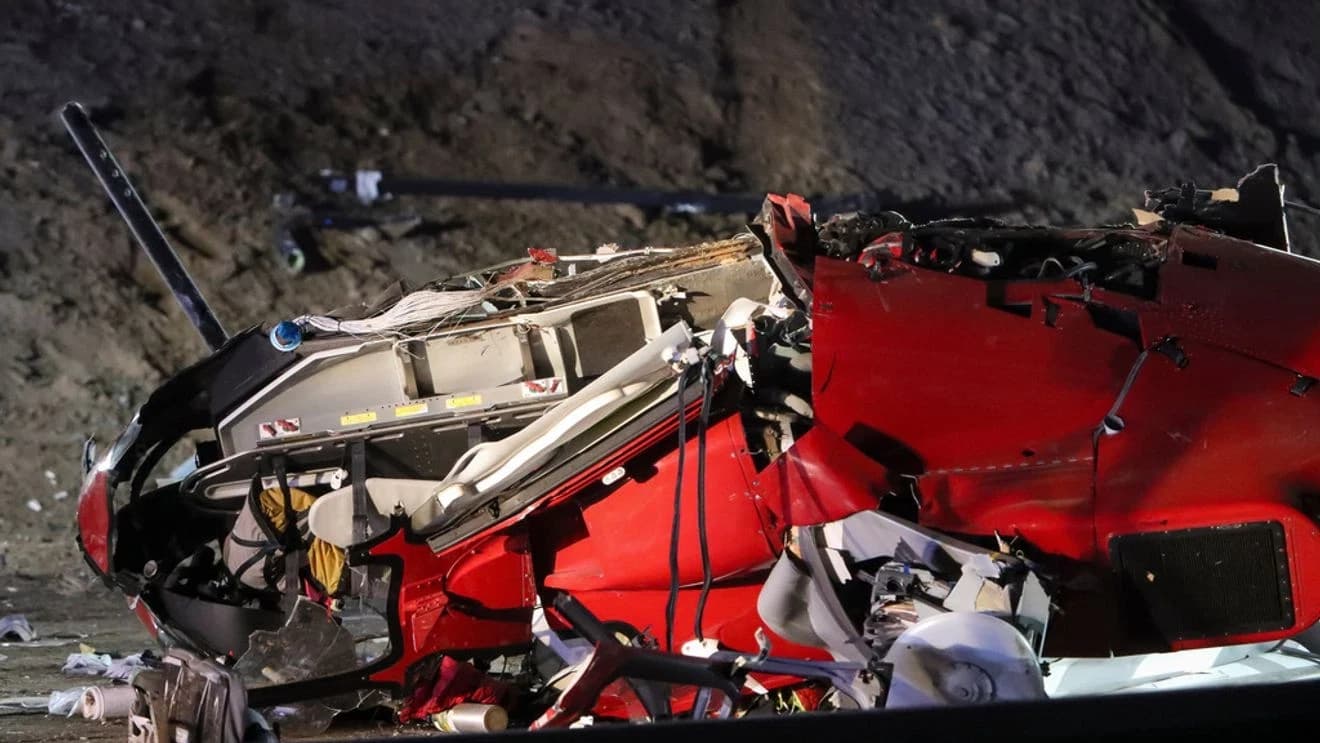Loading News Article...
We're loading the full news article for you. This includes the article content, images, author information, and related articles.
We're loading the full news article for you. This includes the article content, images, author information, and related articles.
In a dramatic display of civilian courage, approximately 15 bystanders in Sacramento, California, rushed to the aid of a downed medical helicopter crew on Monday, October 6, 2025, lifting the wreckage to free a trapped nurse.

A medical helicopter crash on Highway 50 in Sacramento, California, on Monday, October 6, 2025, saw ordinary citizens become first responders, heroically lifting the aircraft to rescue a pinned crew member. The REACH Air Medical Services helicopter, carrying a pilot, a flight nurse, and a flight paramedic, crashed shortly after taking off from UC Davis Medical Center at approximately 7:00 PM Pacific Daylight Time (5:00 AM Tuesday, October 7, 2025, EAT), en route to Redding. All three crew members sustained critical injuries and are currently hospitalised.
Witnesses described a harrowing scene as the helicopter went down, narrowly avoiding other vehicles on the busy freeway. Sacramento Fire Department Captain Pete Vandersluis, who was among the first on the scene, quickly realised that one of the victims was trapped beneath the wreckage. With emergency vehicles delayed due to ongoing construction and traffic, Captain Vandersluis called upon bystanders for help.
Around 15 individuals responded without hesitation, collectively lifting the heavy helicopter just enough to allow the trapped flight nurse, identified as Susan “Suzie” Smith, 67, to be extricated. Ms. Smith remains in critical and unstable condition. The pilot, Chad Millward, 60, and flight paramedic Margaret “DeDe” Davis, 66, are also in critical but stable condition. REACH Air Medical Services has extended its heartfelt thanks to the bystanders for their courageous actions.
While this incident occurred in the United States, aviation safety remains a critical concern globally, including in Kenya. The Kenya Civil Aviation Authority (KCAA) is the principal body responsible for the regulation and oversight of aviation safety and security in the country. Kenya has a robust aviation industry, with 83 Air Operator Certificates (AOCs) issued, including 6 helicopter operators.
In recent years, the KCAA has implemented various measures to enhance aviation safety. For instance, in April 2022, the authority issued strict guidelines for helicopter operations, particularly concerning landings and take-offs in public areas, especially during political campaign seasons. These guidelines mandate that helicopters land and take off at least three kilometres from activity venues and maintain a 30-meter radius free of people to prevent incidents like individuals hanging onto choppers.
Kenya's aviation sector is governed by the Civil Aviation Act (No. 21 of 2013) and various subsidiary regulations, including the Civil Aviation (Operation of Aircraft - Helicopter) Regulations, 2018. These regulations cover general operational requirements, flight operations, helicopter performance limitations, and crew qualifications, among other aspects. The KCAA is also responsible for licensing, certification, registration, and surveillance of aerodromes.
The country's National Aviation Safety Plan (NASP) for 2023-2025 outlines a strategy to continually reduce fatalities and the risk of fatalities through the development and implementation of a national aviation safety strategy. This plan is aligned with the International Civil Aviation Organization's (ICAO) Global Aviation Safety Plan (GASP).
Kenya publishes an Annual Safety Report that provides data on safety occurrences, including accidents and incidents. While specific recent helicopter accident statistics for Kenya were not immediately available, the KCAA's focus on stricter regulations indicates a proactive approach to mitigating risks. Globally, helicopter operations have been identified as a sector with a notable number of fatal accidents.
The Sacramento incident, though geographically distant, underscores the inherent risks in helicopter operations and the vital role of public awareness and emergency response. For Kenya, with its growing use of helicopters for various purposes, including tourism, medical evacuations, and political transport, adherence to and enforcement of safety regulations are paramount. The KCAA's guidelines on operating in public spaces are crucial in preventing similar incidents, especially given the potential for large crowds around helicopters in Kenya.
The exact cause of the Sacramento helicopter crash remains unknown and is currently under investigation by the Federal Aviation Administration (FAA) and the National Transportation Safety Board (NTSB). Similarly, while Kenya has regulations in place, the effectiveness of their enforcement and the frequency of violations, particularly in remote areas or during high-profile events, are areas that warrant continuous scrutiny.
The ongoing investigation into the Sacramento crash will likely provide valuable insights into potential mechanical failures, human error, or environmental factors. These findings could influence global aviation safety standards and practices. In Kenya, stakeholders will be watching for continued rigorous enforcement of KCAA regulations, especially as helicopter use continues to expand. The KCAA's annual safety reports will be key in assessing the impact of current policies and identifying areas for further improvement.